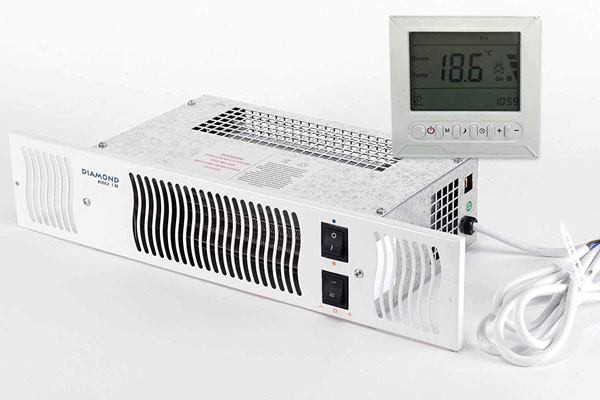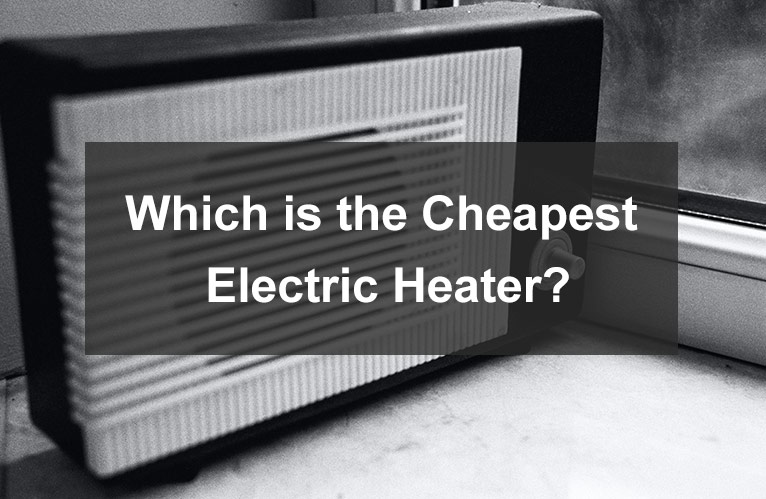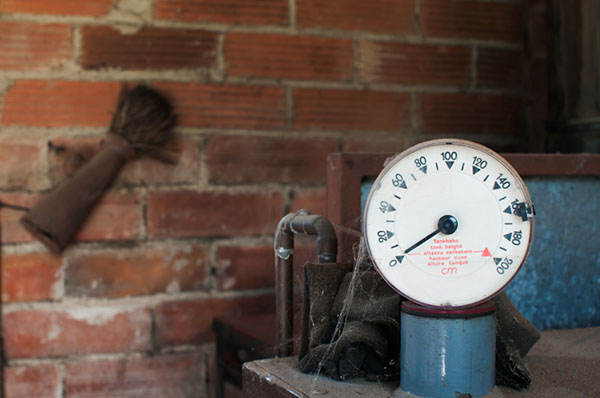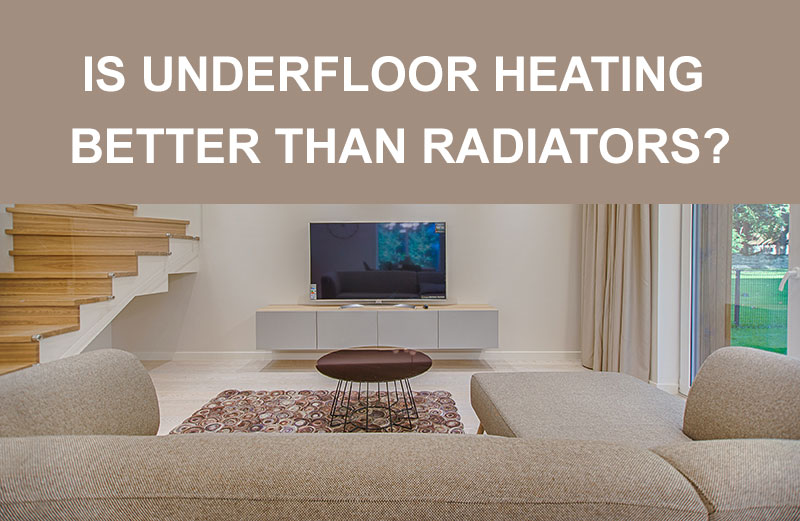When the cold season comes, the first thing that comes to mind is ‘will my home be warm enough?’ Well, if you are looking to save space, reduce your electricity bill, or enhance the heating system in your kitchen, then you should look into Plinth Heaters (like this one). We have taken an in-depth look at Plinth Heaters and produced a detailed guide which will answer any questions you may have. Plinth Heaters are a great way of keeping your kitchen warm whilst not taking up any precious space.
What is a Plinth Heater?
Plinth heaters are space and power-saving kitchen heating alternatives. Apart from saving space and power, they are efficient, powerful, and require minimal maintenance. At the switch of a button on the unit or remote control, these gadgets deliver warm air which is distributed via a grille. We can confidently say that a plinth heater is a powerful and power-efficient alternative to a radiator that heats your kitchen effectively while saving space. They are typically located in the plinths or kickboards of your kitchen.
Types of Plinth Heaters
Generally, there are three types of plinth heaters in the market. The constant factor in all these models is that they all save space and are power efficient. Below are the three main types:
Hydronic plinth heater
These are integrated with your central heating system and produce warmth from hot water. This type of Plinth Heater requires an existing central heating system as a prerequisite.

Diamond 500 Central Heating
- 2 speed fan
- Output: 0.9kW – 1.2kW
- Heat a 30 square metre room
Electrical plinth heater
The heater is wired directly to your power supply. It is a device that can stand on its own without requiring another heating system. These produce heat in a more traditional manner using a heating element and a fan.

Diamond 1.9kw Electric Kitchen Plinth Heater
- 2 heat settings: 950w and 1900w
- 7 Day programable Timer and Room Thermostat
- Fits under a 500 wide kitchen cabinet
Dual-mode plinth heater
This is a device for people who are looking for flexibility in their heating system. The device can connect to a power supply or/and still connect to the existing central heating system. These are a combination of the electrical and hydronic plinth heater model. Dual-mode systems may be advantageous if you wish to heat the kitchen without switching on the heating for example.
How Does a Plinth Heater Work?
Plinth heaters work through a simple mechanism, where they are fitted with an element. The standard electrical plinth heater draws power from the mains to power a heating element and fan. The power is used to drive a fan that sucks air into the heater. After this, the air is then heated by the element before being circulated out through the room by the fan.
On the other hand, the hydronic plinth heater draws its heat energy from the existing central heating system. This heat is then passed through an exchanger and the fan blows air over this to produce warm air. These tend to be cheaper to run as they do not have a heating element.
The third option is the dual plinth heater which can use the mains as well as the central heating system. These offer you versatility as they can be used without relying on the central heating being turned on.
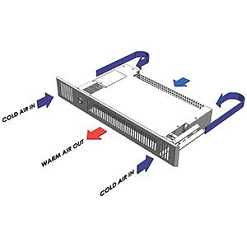
How to Install a Plinth Heater?
Unlike electric wall heaters or radiators, plinth heaters do not cling to the wall of your kitchen. Instead, they are installed in a plinth or kickboard under your kitchen cabinets. Thus, these heaters are generally for those who want to maximise space in their kitchen. Radiators can often be unsightly and a plinth heater solves this problem. The installation process is not very complicated. However, it may need some plumbing and technical skills depending on which type.
As we said earlier, a plinth heater can run independently or be powered by a central heating system. Your choice depends on your preference and the existing system.
Electrical plinth heaters are the easiest to install since they plug directly to the mains in your kitchen.
On the other hand, hydronic and dual-mode plinth heaters are more complicated to fit, due to the plumbing required. Again, they have to be integrated into the existing home central heating system and therefore, it is vital to hire a professional. Although the hydronic models are more challenging to install, they are more efficient than the standalone electrical models.
We found an excellent video on how to install a plinth heater which we have linked below:
Plinth Heater vs Radiator
There are several reasons you should consider fitting a plinth heater in your own kitchen, we will discuss some of the benefits. The primary benefit of a plinth heater is they they use much less space than a radiator. As well as this, they can also serve as a cheap form of floor heating when compared to retro-fitting underfloor heating. As well as providing an affordable means of kitchen heating, the plinth heater is efficient in both power consumption and heat provision. They are cheap to run and easy to maintain, not forgetting relativity simple to install.
In short, here are the pros and cons of Plinth Heaters:
Pros
✅ Warm up kitchen quickly
✅ Minimal maintenance
✅ Hydronic models are energy efficient
✅ Cheaper than under floor heating
✅ Super space saving and discreet
✅ Fairly easy to install
Cons
❌ Electric models are not that energy efficient
❌ Initial cost higher than radiator
❌ Limited locations for installation
How Much Does it Cost to Run a Plinth Heater
As we saw earlier, the plinth heater is cost-effective in both installation and running costs. Since hydronic plinth heaters use roughly 2 watts of electricity, the device’s electricity consumption is roughly 10p per week (based on 5 hours on-time a day). In the case of a hydronic plinth heater, the electricity consumption is 25% less than the traditional radiator, and it heats the radiator in less than half the time the radiator takes. It is therefore evident that a plinth heater is cost-efficient in electricity consumption compared to other house heating methods.
Please note that electric plinth heaters will cost significantly more to run than their hydronic cousins. This is because they rely on an electric powered heating element whereas the hydronic models only use electricity to power the fan. Electric plinth heater running costs will be much more comparable to space heaters and electric radiators. We advise you to get a hydronic or hybrid model if possible as it will save you a lot of money over time.
Examples of Best Plinth Heaters
We decided to review some of the leading plinth heaters currently available to help you make an informed purchase. Below is our favourite electric and hybrid plinth heater models.
Bidex Diamond 1.9kw Electric Kitchen Plinth Heater Review

Diamond 1.9kw Electric Kitchen Plinth Heater
- 2 heat settings 950w and 1900w
- Fits under a 500 wide kitchen cabinet
- Heater unit dimensions 320w x 200d x 97h, Grill dimensions 100h x 497w
Pros
- Sturdy and long-lasting construction
- Convenient placement of control panel
- Compact in size
- Grille available in 3 colour options
- Inbuilt thermostat
- Comes with a 2-year warranty
- Easy to set up
Cons
- Does not have auto-shutoff
- Cannot be integrated with the central heating system
Are you looking to heat your house efficiently without breaking the bank? Well, consider the Bidex Diamond 1.9kw Electric Kitchen Plinth Heater. This heater is a 30 x 9.7 x 20 centimetres gadget that can fit into smaller spaces, thus heating your room without consuming your precious space. The above measurements make the device suitable for heating garages, kitchens, sheds, caravans, utility rooms, and other limited spaces.
The Bidex Diamond is endowed with 2 heat settings, 950 watts and 1.9kw, capable of heating a 29 square meter room. The unit features a 7-day timer with 3-period settings per day for convenience, a built-in room thermostat and a window open sensor.
What’s more, it comes with a control panel that can be set at any height, meaning you do not have to bend when controlling your heater.
Bidex Diamond 500 Central Heating Kitchen Plinth Heater Review

Diamond 500 Central Heating Kitchen Plinth Heater
- For use with a wet central heating system, and a heat output of (0.9kW – 1.2kW)
- Fits under a 500 wide kitchen cabinet
The Bidex Diamond 500 is another affordable, compact yet efficient heater. It is a hybrid model that features state of the art materials and components to ensure it’s not only elegant but also powerful and durable. If you don’t have enough room for a radiator then do not worry. This plinth heater measures 53 x 38 x 12 centimeters which ensures it can fit under cupboards, kitchen cabinets, and other small spaces (approximately 500mm wide) and still work effectively.
The device connects easily to the existing central unit heating system, thereby warming your house and keeping your kitchen toasty with minimal visual impact. Additionally, it comes with a 2-speed fan capable of warming a 27 square meter room in a very short time, while consuming minimal power.
What most people love about this plinth heater, is its heating efficiency which is 24% more than traditional radiators. Also, it comes with an intelligently inbuilt capability that detects temperature changes and automatically switches your heater on or off. What’s more, it requires minimal maintenance.
Plinth Heater FAQs
Are plinth heaters any good?
The general answer to this question is that these devices are very good. First of all, they consume less energy and space, making them ideal for people who have a small kitchen and want to save on electricity bills. Additionally, they heat the room evenly, hence making them efficient.
What size Plinth Heater should I buy?
The main factor to consider when buying any heater is the space dedicated to its installation. You do not want to buy a machine that cannot fit in your kitchen space lest you end up wasting time and resources. Therefore, measure the installation space before swiping your credit card.
Can plinth heaters be installed in the bathroom?
Yes, plinth heaters can be installed in the bathroom, bedroom, kitchen, and any other place they are needed. The vital thing is to consider the available space and check if the gadget you want to install will fit.
Final Thoughts
If your new kitchen means that your old radiator needs to go, there are many plinth heater models you can consider depending on your space. This gadget keeps your house warm without competing for space with other appliances. Additionally, it saves energy while still working fast and effectively. You may want to consider our two choices if you need a heater to serve you for many years. Please consider a hydronic or hybrid model if possible as these are much cheaper to run and will save you money over the long term.
Last update on 2025-02-28 / Affiliate links / Images from Amazon Product Advertising API

